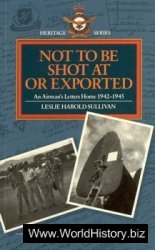The League of the iRoquois, which united the Seneca, Cayuga, Oneida, Onondaga, and Mohawk, originated when Hiawatha brought the Five Nations together in peace.
According to Iroquois histories, there was a time when the Five Nations were at war with one another and with outsiders. Because of the constant warfare, no one could feel safe. One man, Hiawatha, lost his reason when all three of his daughters died. Grief stricken, he left the people and went into the forest, where he lived as a cannibal. In the forest he met a man or supernatural being named Deganawida, the “Peacemaker,” who had been born of a virgin. The Peacemaker cleared Hiawatha’s mind and restored him to sanity. He told Hiawatha of his plan to bring peace to the Iroquois nations by creating an alliance among them. Because the Peacemaker suffered from a speech impediment, Hiawatha spoke for him. Together they traveled through Iroquoia, speaking to the people. They convinced the nations to replace blood feuding and constant warfare with condolence rituals that relieved sorrow and restored grieving and angry people to reason. Hiawatha’s greatest opponent was the fearsome Onondaga leader Thadodaho (or Atotarho), a sorcerer whose hair was made up of writhing snakes. Hiawatha overcame Thadodaho, combed the snakes out of his hair, and restored his reason. The resulting League of the Iroquois was probably founded in the 15th century.
Further reading: Matthew Dennis, Cultivating a Landscape of Peace: Iroquois-European Encounters in Seventeenth-Century America (Ithaca, N. Y.: Cornell University Press, 1993); Alice Beck Kehoe, North American Indians: A Comprehensive Account (Englewood Cliffs, N. J.: Prentice Hall, 1992); Daniel K. Richter, The Ordeal of the Longhouse: The Peoples of the Iroquois League in the Era of European Colonization (Chapel Hill: University of North Carolina Press, 1992); Anthony F. C. Wallace, The Death and Rebirth of the Seneca (New York: Knopf, 1973).
—Martha Robinson
Missouri River, ever since a sacred being, Charred Body, brought 13 couples from the sky to make their first village.
The Hidatsa shared many cultural traits with their near neighbors, the Mandan. Both hunted and farmed in similar ways, and their villages were popular trading sites. The Hidatsa were also closely related to the Crow, who may have split from the Hidatsa as late as A. D. 1700. Crow and Hidatsa families and bands often visited and traded with one another; the Crow brought HORSES to trade for agricultural products.
The first European to describe the Hidatsa and Mandan was the French-Canadian trader Pierre Gaultier de Varennes, who visited the Mandan in 1738. In 1797 the Canadian geographer David Thompson estimated the Hidatsa population at 1,330 and the Mandan population at 1,520.
Further reading: Peter Iverson, “Taking Care of the Earth and Sky,” in America in 1492: The World of the Indian Peoples before the Arrival of Columbus, ed. Alvin M. Jose-phy, Jr. (New York: Knopf, 1992), 85-117; Alice B. Kehoe, North American Indians: A Comprehensive Account, 2nd ed. (Englewood Cliffs, N. J.: Prentice Hall, 1992); Mary Jane Schneider, The Hidatsa (New York: Chelsea House Publishers, 1989).
—Martha K. Robinson




 World History
World History









